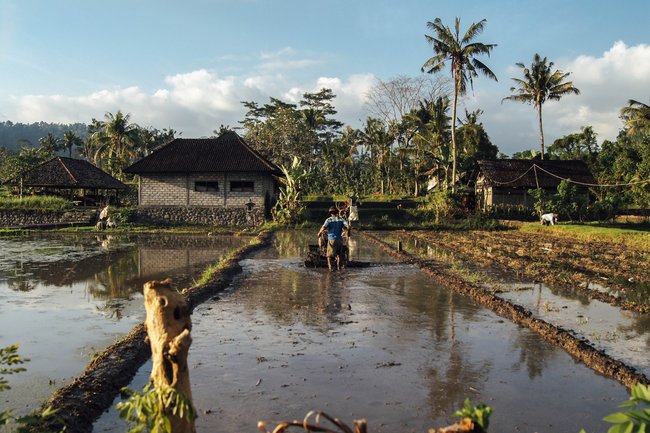Smallholder farming represents a crucial component of the global food production system. Especially in the countries of the global South, where small-scale agriculture remains widespread, this type of farming contributes to maintaining food security and preserving livelihoods. At the same time, competition from international conglomerates, rural flight, ecological changes and the fragmentation of landholdings leave many smallholder farmers vulnerable. Digitalization can help these smallholder farmers to improve productivity, while at the same time having the potential to bringing social, economic and environmental benefits to local communities throughout rural Africa, Asia and South America.
According to the Food and Agriculture Organization of the United Nations (FAO), smallholders are defined as small-scale farmers, pastoralists and fishermen who cultivate plots of land between 1-10 hectares. Smallholder farming is family-driven, with often more than one generation working the land and using a proportion of the harvest for personal consumption. This form of agriculture provides up to 80 percent of food produced in developing countries around the world, with more than 2.5 billion people directly dependent on small-scale farming, both for their livelihood and food security.
 However, the challenges faced by smallholder farmers in developing countries remain pronounced and multi-pronged: climate change is increasingly responsible for draughts or flooding, inefficient farming practices can lead to soil exhaustion or erosion, migration to the large urban centers deprives rural communities of their young people and competition from international agro-industrial conglomerates threatens farmer’s livelihoods, just to mention a few. In combination with population growth/pressure on the land, limits to productivity using traditional cultivation methods and ecosystem degradation, a new approach to smallholder agriculture is needed to maintain food security and prevent small-scale farmers from being further marginalized.
However, the challenges faced by smallholder farmers in developing countries remain pronounced and multi-pronged: climate change is increasingly responsible for draughts or flooding, inefficient farming practices can lead to soil exhaustion or erosion, migration to the large urban centers deprives rural communities of their young people and competition from international agro-industrial conglomerates threatens farmer’s livelihoods, just to mention a few. In combination with population growth/pressure on the land, limits to productivity using traditional cultivation methods and ecosystem degradation, a new approach to smallholder agriculture is needed to maintain food security and prevent small-scale farmers from being further marginalized.
Lessons learned from Thailand
Rice represents a key commodity in Thailand. The industry worth BT156 has been struggling in recent years due to foreign competition and falling prices. In addition, Thai rice farmers have been facing many of the challenges above-mentioned. Sponsored by the German Federal Enterprise for International Cooperation (GIZ), in collaboration with public and private partners, the Better Rice Initiative Asia (BRIA) has implemented several projects throughout the region encouraging the use of modern technologies including pesticides, fertilizers and drones for areal imagery. And the first pilots are promising: drone data, for example, shows farmers when crops are ready for harvesting, preventing spoilage and increasing productivity by up to 20 percent.
While the potential for smart farming in the smallholder context is considerable, much will depend on how this potential will be exploited. Governments can help in this process by providing the right policy instruments, including national plans to scale-up the support for agricultural innovation, financial instruments (such as microloan schemes) for smallholders to invest in smart technologies, and by putting in place educational infrastructure, in particular for women and the youth. In addition, while it may still be too early to evaluate the impact of digitalizing of agricultural production in developing countries, this process has the potential to foster one crucial trend: technology and the Internet of Things (IoT) make farming exciting again for younger generations. For more information about smart farming and its potential for small-scale farmers, click here.